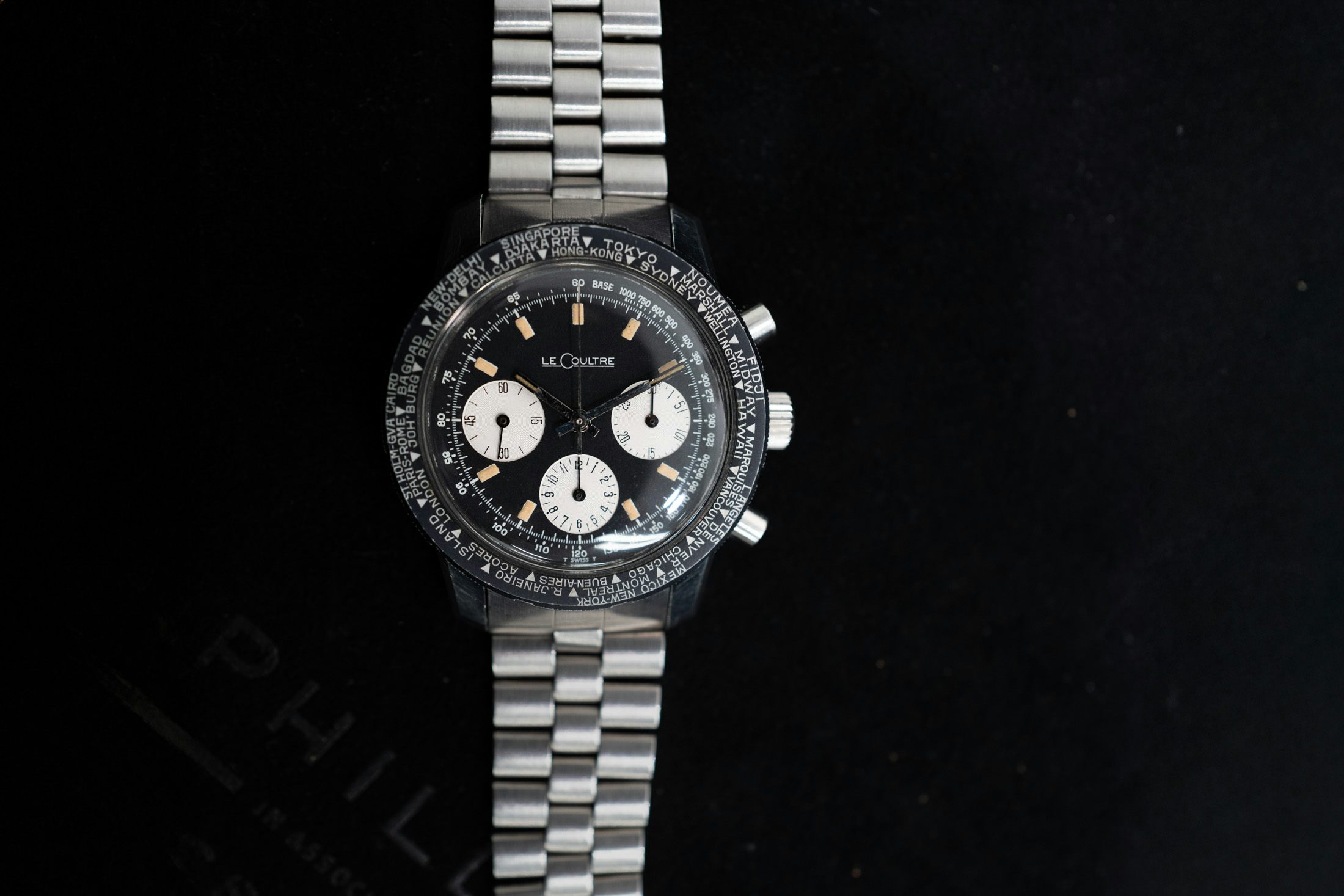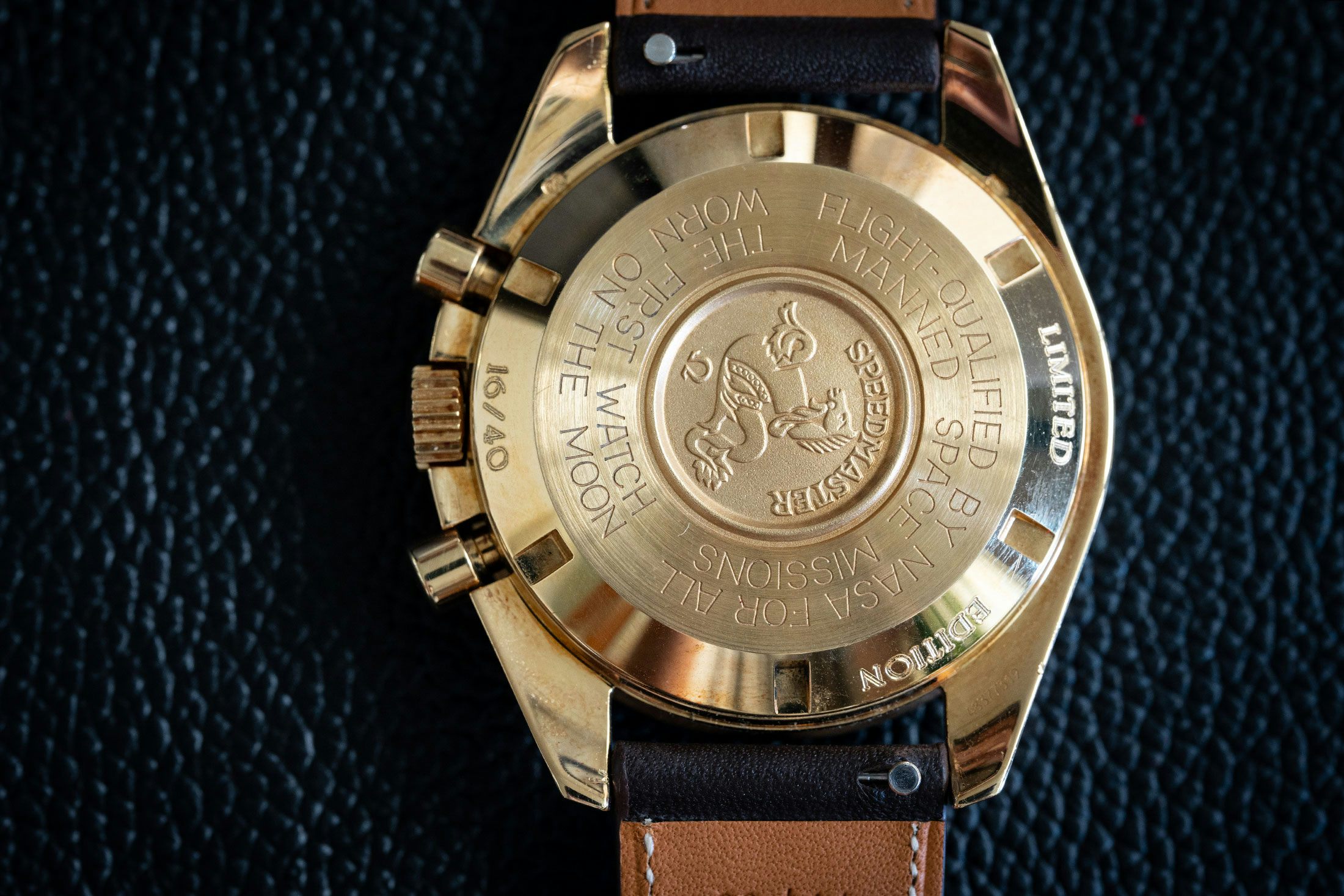ADVERTISEMENT

ADVERTISEMENT
The Phillips "TOKI: Watch Auction," for which Hodinkee Japan serves as the media partner, will be held alongside the "Hong Kong Watch Auction XIX" starting November 22, 2024. This is the auction house's first themed auction focused on Japanese watch collecting, gathering watches that reflect the unique Japanese sense of beauty and watch-collecting culture.
The lineup includes pieces made exclusively for the Japanese market, perfectly preserved pristine examples sourced via Japanese collectors, and unique watches created by Japanese independents. A select few lots were on display at the auction preview held in Tokyo earlier, and the details of the entire 115 lots are now available online. From the entire sale, here are the personal favorite picks from the editorial team at Hodinkee Japan.
Masaharu Wada – Rolex Pre-Daytona Ref. 6238 (Lot 78)
In this Japan-themed auction catalog, one of the pieces that piqued my interest was this Rolex Pre-Daytona Ref. 6238 in 14k yellow gold. I think this uniquely charming watch packs the very essence of watch collecting. This Pre-Daytona, ca. 1967, appropriately spec'd in 14k yellow gold, was a model made for the U.S. market. The watch's biggest proposition, however, is the intricately applied engravings on the entire case (bezel, lugs, side walls, and caseback) and the bracelet (end links and clasp buckle). Delicately etched tiger and female motifs can be seen clearly on the caseback and buckle, adding a novel element to an already exciting watch.
This watch was also featured in the Japanese publication Time Spec Magazine Issue No. 8 (Watches of the World). The story goes that a Japanese collector, Mr. Yamanaka, found this watch by chance at a knife show in New York and he managed to purchase it after a lengthy negotiation with an American Rolex dealer. The beautiful engraving covering the entire watch was done by Marcello Pedini, a renowned Italian knife engraver.
The valuation of modern watch collecting often focuses on "how well the original conditions have been preserved." Besides the added engravings, the watch retains all its original components in beautiful condition. What we also need to pay attention to is the hammer price of the piece at the last auction. The auction debut of this watch was at Christie's "Important Watches" sale in 2007, when it fetched a whopping 787,500 Hong Kong dollars (about 11,500,000 Japanese yen at that time).
Surprisingly, this aftermarket-engraved Pre-Daytona realized the highest price among all other Daytona lots at the auction. For reference, a Paul Newman Daytona Ref. 6239 was sold for 611,500 HKD, and a solid gold Ref. 6263 fetched 427,500 HKD.
In a world where values are heavily biased towards originality, this Pre-Daytona serves as a reminder that the watch-collecting hobby is supposed to be free-minded and up to individual sensibilities. This engraved piece is an embodiment of the original owner's appreciation towards their own sense of beauty and aesthetic values literally etched into the watch, and it shows us the fun aspect of collecting — it is not always about the originality alone, and a personality and stories like this could add a depth to our beloved hobby.
The estimate is 160,000–310,000 HKD (about 4,700,000–7,840,000 JPY and $30,300–$50,700 USD). The details of Lot 78 can be found here.
Yu Sekiguchi – Jaeger-LeCoultre Ref. E2643 (Lot 80)
I have recently come to the realization that hand-wound chronographs are going to become an important pillar of my own collection. However, when you look at the current new watch market – even the Omega Speedmaster exceeds 1,000,000 JPY (approximately $6,500 USD) – this vintage chronograph jumped out to me at the auction preview.
This Jaeger-LeCoultre piece is a diver's chronograph from the 1960s, which is somewhat of a rare configuration at that time. Since this watch was intended for the U.S. market, the dial sports the LeCoultre branding. Although I said "diver's," the watch comes with interchangeable world-time, telemeter, and 60-minute elapsed time bezels so that the watch can shape-shift depending on the owner's preference. The "Shark Deep Sea Chronograph" (the European version was called "Vogue Chronograph") with the Valjoux 726, which is based on the Valjoux 72 with a beat rate of 21,600 vph, gives you an authentic taste of what hand-wound chronograph should be.
There is no doubt that an automatic would be more practical for actual use, and if a modern watch manufacturer were to develop a new watch today, basing it around an automatic caliber would be the natural choice. Developing a completely new model line based on a manual caliber wouldn't be beneficial for the vast majority of people (both for the manufacturer and consumers). That also means that manual-wind chronographs will remain in a niche, a genre reserved to represent the high-end watchmaking realm. While I personally love the style of hand-winding chronographs – think of the tool-like aesthetics combined with thinner and more elegant design language – I also think that it is a genre still undervalued as collectibles, and we should pay more attention to the format.
For the last few years, we have been experiencing a bit of watch fever, and shifting the perspective of watch collecting, even a little, is important. Manual chronographs, such as this LeCoultre, could teach us the fun of pursuing watches within a realistic budget, which was once fundamental to the watch-collecting hobby.
The estimate is 55,000–95,000 HKD (about 1,000,000–1,860,000 JPY and $6,500–$12,000 USD). The details of Lot 80 can be found here.
Kyosuke Sato – Seiko Astronomical Observatory Chronometer (Lot 40)
I was interested in a few other lots (lot 15: Fragment Design x Bamford Ref. 114060 Custom and lot 82 Ref. 6263 Big Red Daytona, for example), but the one I am most curious about in terms of the auction outcome is Lot 40, the Seiko Astronomical Observatory Chronometer.
The competition itself at the Neuchâtel observatory ended after 1967, but the chronometer testing and certification practice continued. In 1968, Seiko submitted 100 units of Cal. 4520 (Seiko's first manual 10-beat/hi-beat movement) for chronometry certification, and 73 of them passed the test. In the following two years, an additional 153 movements passed the test, bringing the total count of certified chronometer movements to 226.
The surprising next move Seiko made was to put these individually certified calibers into commercially available production watches marked as certified chronometers. The first batch of 73 watches released in 1969 used the specifically regulated Cal. 4520 as-is, and the follow-up pieces carried the Cal. 4580 designation. Lot 40 is one of the Cal. 4580 watches released in 1970.
The Observatory Chronometer models are indeed rare, but upon release, they were mostly praised by Japanese domestic collectors and dealers. However, Japanese watch brands have gained a presence overseas more than ever in recent years following Grand Seiko's branding success. I am very curious to find out exactly how much attention international collectors are giving to Seiko watches. The auction result of this historic vintage piece may be a good indicator of that attention.
The estimate is 160,000–310,000 HKD (about 3,200,000–6,000,000 JPY and $20,700–$38,800 USD). The details of Lot 40 can be found here.
Yusuke Mutakami – Omega Speedmaster Professional 'Golden Panda' (Lot 13)
In the entire TOKI Watch Auction lineup, I think Omega came out strong, second only to Rolex. Personally, the cult-classic Ultraman and the world's first ana-digi chronograph, the Chrono-Quartz, also tickled my fancy. However, to go with the Japan-focused theme of the auction, I picked this model: a 40-piece Japanese limited edition Speedmaster, dubbed the "Golden Panda."
The value of this piece, which is made of a solid gold case, panda dial, and black bezel, is not just about the edition size but also its execution. In a Christie's auction in 2016, the serial number 17 of this model, which had a 20,000–30,000 USD estimate, realized 35,000 USD (about 4,200,000 JPY at that time), and the Phillips Watch Auction XVI held in 2023 brought 304,800 HKD (about 5,486,000 JPY then) against the 250,000–550,000 HKD estimate for the edition serial number 1. Both examples were in pristine condition with not a single stain on the dial, and this one is on par with those as far as the condition is concerned. The subtle patina on the gold case actually looks beautiful, and there are no detractive scratches on the case. The engravings on the caseback stay crisp, with "Limited Edition" and "16/40" signifying the rarity of this reference.
Unless you are after a specific serial number, this might be a chance to win one of the rare "Golden Pandas" at a relatively reasonable price point. It comes full-set with the box, the international warranty card stamped by Shinjuku Takashimaya, and the cardholder. Personally, I like that this model sports the Cal. 1861, which was discontinued in 2020.
That being said, I must confess that the number-one reason I picked this particular watch was due to its looks. The combination of black bezel insert and gold case is lustrous yet mature. The black outer track fills the white dial nicely, making the whole watch quite handsome. This particular combination is unique to this reference as far as I could find. The estimate is identical to the more famous "Ultraman" (which even gained an homage variant in the MoonSwatch series) in Lot 58, but I'd like to push this one over that for its rarity.
The estimate is 150,000–300,000 HKD (about 2,760,000–5,520,000 JPY and $17,800–$35,700 USD). The details of Lot 13 can be found here.
Yuki Matsumoto – Credor GCBY997 (Lot 46)
I chose a piece from Seiko's luxury sub-brand, Credor. I thought about the top lot entries and the pieces from the independents (that I'd like to gauge price movements of), but ultimately, I followed my personal "simple functions, luxurious design" motto and picked the piece I liked its design the most. In the Credor ref. GCBY997, luxury, and watchmaking masterfully coexist. The combination of simple two-hand function and beautifully lacquered dial gives this watch a truly special presence.
The dial is inspired by Ryusei Raden's (shooting stars) theme, which reminds you of a meteor shower in a pitch-black night sky. This dreamy view was crafted by master Urushi lacquer artist Isshu Tamura, using carefully laid mother-of-pearl inlays cut into 0.2 mm thick pieces. This MOP craft visualizing a stary night sky with unique color hues is truly mesmerizing. This highly crafted and stunningly beautiful dial is ideal for someone who appreciates visual aesthetics, such as myself.
The 1.98 mm ultra-thin movement, Cal. 68, drives this watch. Only two movements can be built in a day, requiring a precision tolerance of 0.01 mm to cut out the individual parts. The movement is highly decorated and finished to the highest standards by the craftsmen and women. This Credor is from a relatively new release of a 60-piece limited edition, unlike the other vintage models and piece-unique offerings in this auction. However, the watch does not lack the presence against those finely aged classics. This piece truly resonated with my design motto, and I found it to be a worthy addition to my own collection.
The estimate is 30,000–60,000 HKD (about 590,000–1,180,000 JPY). The details of Lot 46 can be found here. Also, this lot has no reserve, which means the highest bidder at the close of the auction will take the watch home regardless of the final price. The key is the split-second decision-making at the end, but there is a chance one might win it for a great price. Maybe I should make a bid or two.
To check out all lots in the TOKI: Watch Auction, visit Phillips.
This article was translated from Japanese by Suguru H. Nishioka.




















































Top Discussions
Introducing The Ōtsuka Lōtec No.5 Kai
Introducing The Chopard L.U.C Flying T Twin Perpetual And 'Mark III' L.U.C Lunar One
Hands-On An In-Depth Look At Vacheron Constantin's New Historiques 222 In Steel